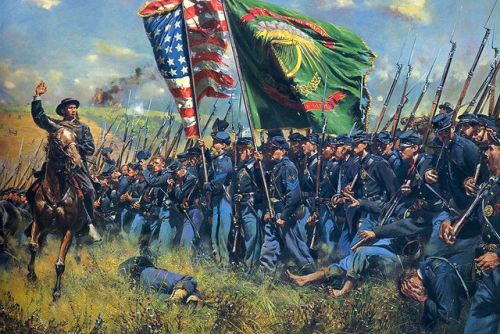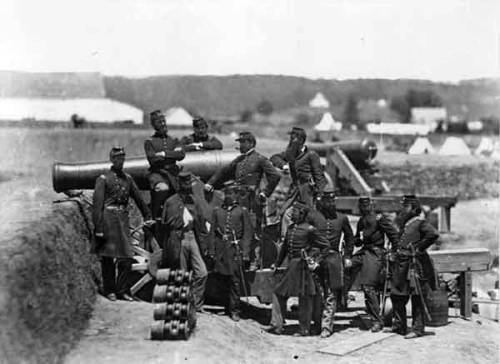peashooter85:The Irish Brigade,During the American Civil War, there were a handful of units on both
peashooter85:The Irish Brigade,During the American Civil War, there were a handful of units on both sides that gained a reputation as being elite units, among the bravest, toughest, and fiercest of the army. The Iron Brigade for example, has a reputation as the best unit of the whole Civil War. Another unit to earn such a distinction was the Irish Brigade, consisting of Irish immigrants and composed of the 69th, 88th, and 63rd New York Volunteer Regiments. The Irish Brigade was commanded by Brigadier Gen. Thomas Francis Meagher, who was born in Ireland but had to flee to America because he was a participant in the failed Revolution of 1848 against the British.The courage and tenacity of the Irish Brigade began at the Battle of Bull Run AKA Manasas when it was one of the few units that didn’t break and run when the Confederates gained the upper hand. Holding firm, the Irish Brigade formed an effective rear guard, holding off the entire Army of Virginia while the Army of the Potomac fled in panic, thus averting a major military disaster for the Union. Throughout the rest of the war, the Irish Brigade was often employed as elite shock troops, either forming the spearhead of Union assaults or being employed in desperate rear guard actions as the Union Army retreated. The big problem with being an elite unit is that elite units suffer disproportionate casualties. The Irish Brigade was no exception. Originally the Irish Brigade originally consisted of around 2,000 - 2,500 men. When the unit was disbanded, it had less than 600 men. Much of the Irish Brigade’s woes stemmed from the fact that they were armed with Model 1842 Springfield muskets which were smoothbores. Gen. Meagher insisted on the smoothbore muskets because then they could be loaded with buck and ball unlike a rifled musket. Instead of a single bullet, the musket was loaded with a .69 caliber ball and 4 to 8 pieces of .30 caliber buckshot, thus turning the musket in a shotgun. The problem with this was that their muskets had limited range, no more than 50 - 100 yards. When advancing against enemies armed with rifled muskets, which had a range of several hundred yards, the brigade would suffer horrific casualties. However, once in range, a volley from the Brigade would be devastating. Due to the casualties and loss of manpower, the Irish Brigade was disbanded in June of 1864, them men reassigned to other units. -- source link
#irish brigade#civil war

